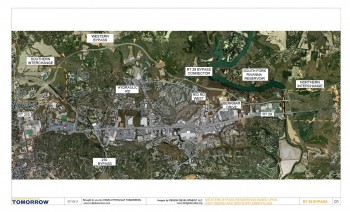You can have the most walkable neighborhood in the world, but if the only places you can walk to are your neighbors’, the neighborhood is not truly walkable; this seems to be something lost on Albemarle County, whether intentionally or circumstantially.
Now the County seems to be grasping this disconnect –
Charlottesville Tomorrow reports that the County is debating the Neighborhood Model.
Having islands (neighborhoods) unto themselves does not provide what homebuyers – or home owners – are looking for if they are seeking to live in a walkable community. I could rattle off the number of subdivisions in Albemarle County that are very walkable – but to do anything other than walk to friends’ houses (even that’s not allowed due to today’s fear-centric society!)
The number of neighborhoods in Albemarle County from which residents can get to stuff – stores, coffee shops, schools, work – without having to resort to a car is much smaller. Further, the number of neighborhoods built since 2001 that meet even two thirds of the 12 tenets can likely be counted on one hand.
Six questions:
1 – What does one say to those who buy in a neighborhood who don’t know that interconnectivity is pine of the 12 tenets of the Neighborhood Model? (hint: this is part of the buyer agent’s role – to help educate as best possible that if they don’t own it it’s going to change)
2 – Should developers be required to put in infrastructure from the beginning?
3 – Who should pay for the infrastructure – developers, homebuyers (see previous choice), all property owners (via property taxes)?
4 – How are walkability and access defined?
5 – Has the Neighborhood Model been successfully implemented?
6 – Which are the most “successful” neighborhoods? How is “success defined”?
Read More


